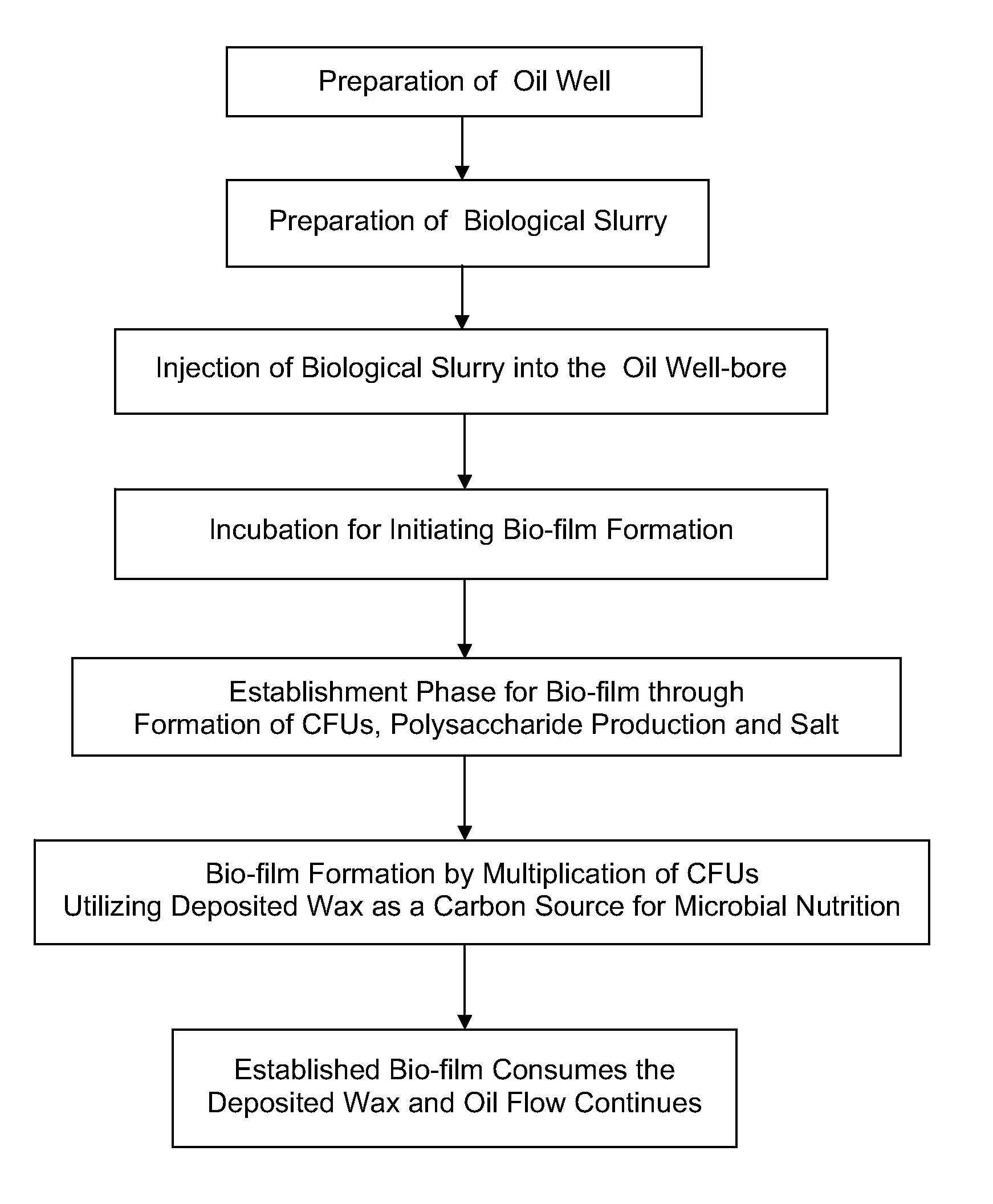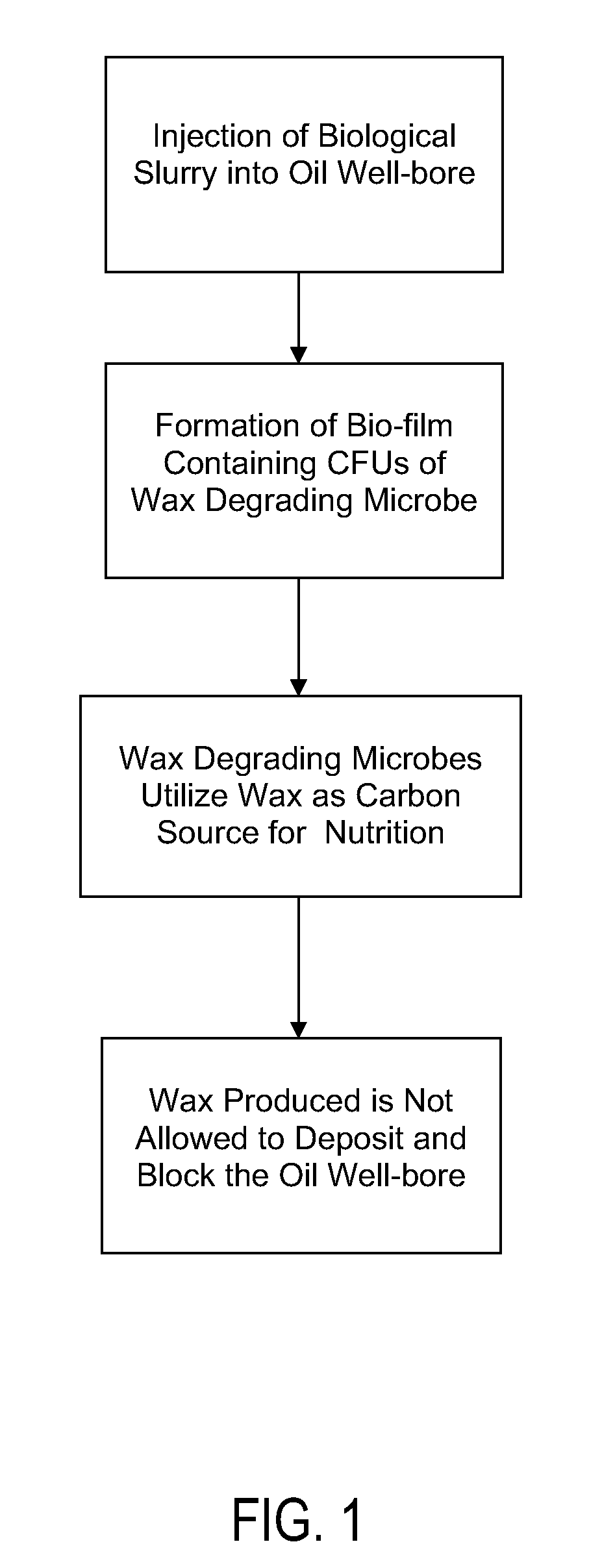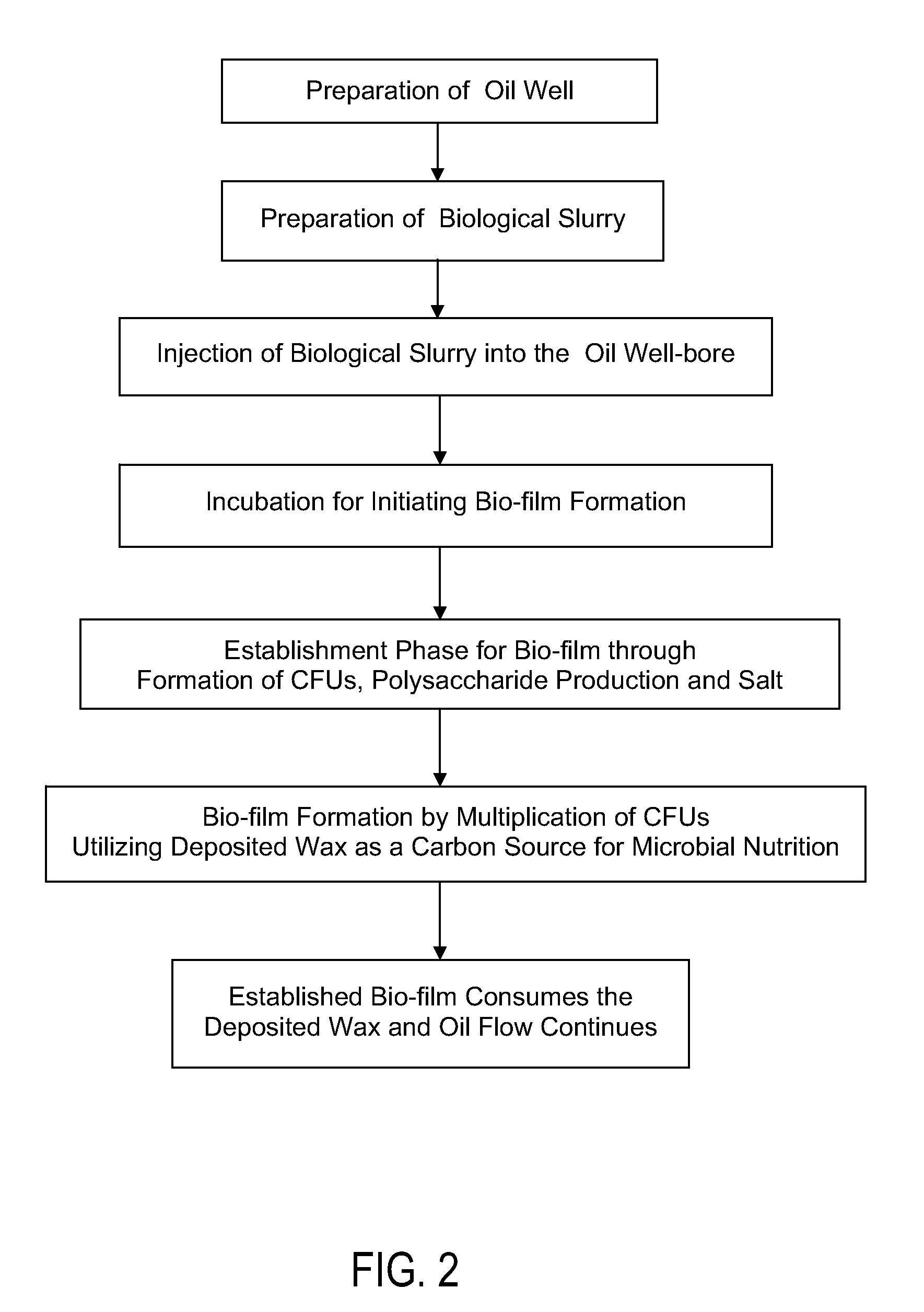Wellbore treatment for reducing wax deposits
a wellbore treatment and wax technology, applied in the direction of fluid removal, wellbore/well accessories, chemistry apparatus and processes, etc., can solve the problems of loss of billions of dollars per year, crude oil flow through the wellbore tubulars to decrease markedly or to stop completely, and achieve long-term and cost-effective improvement of oil flow
- Summary
- Abstract
- Description
- Claims
- Application Information
AI Technical Summary
Benefits of technology
Problems solved by technology
Method used
Image
Examples
example 1
Selection and Testing of Indigenous Wax-degrading Microbes
[0037]A systematic process was employed to obtain enrichment of superior wax degrading microbes, particularly thermophilic and mesophilic bacteria. Selected soil samples were taken from various depths ranging from about 1-4 ft below the surface at a site where paraffin wax from an oil well was undergoing natural degradation by indigenous microorganisms. The soil samples were mixed with nutrient media to obtain cultures. At least 59 different bacteria were initially identified in the enrichment. These and other bacteria were examined for their ability to degrade samples of wellbore wax by measuring the selective degradation of paraffin molecules primarily ranging from C24 to C32 carbon chains, to select the initial group of potentially useful cultures. Culturing at temperatures up to 45° C. was another primary criterion used for screening the cultures.
[0038]Next the selecting process focused on degradation kinetics to determin...
example 2
Deterring Constriction of Oil Flow Due to Wax Deposits
[0043]Medium and inoculum preparation. The selected Acinetobacter baumanii and Halomonas eurihalina bacterial strains are activated from a mother stock culture stored in −70° C. An ampoule of mother culture is initially thawed, and an inoculum taken from the mother culture was activated by holding it in ice for 3-4 hours. The bacterial culture is inoculated in 5 ml minimal salt medium (MSM) which had been previously autoclaved at 121° C. for 15 minutes, then cooled. Approximately 1 liter of MSM is prepared by addition of 0.9 g KH2PO4, 0.8 g K2HPO4, 0.3 g MgSO4, 0.4 g NH4Cl, and 0.6 g KNO3 in 1000 ml distilled water. To this, 12 ml stock solution of trace minerals were added in quantities that were described in Example 1. Oil, sucrose or wax at a concentration of 0.1% to 1.0% was used as a carbon source. The bacterial culture is incubated in the MSM for 30-40 hours at 30-40° C. until optimal growth is achieved. A few tubes (2-5) a...
example 3
Preparation of Bioslurry for Treating an Oil Wellbore
[0049]A bioslurry is prepared as follows, taking care at each stage to use sterile technique in order to avoid contamination and introduction of any undesired microbes:[0050]a) providing an inoculum by thawing a mother culture of one or more selected microbes, originally stored at −70° C., or taking a portion of the thawed mother culture, and holding the mother culture or portion thereof (the “inoculum”) at about 0° C. for about 3-4 hours, to activate the microbes;[0051]b) serially multiplying the activated inoculum by[0052]i) injecting 0.1 ml of the activated inoculum in each of several test tubes (e.g., 5-20) test tubes containing 5.0 ml of the growth culture medium and incubating the test tubes at a temperature in the range of 30-40° C. for a period of 1-3 days, whereby an optimum growth rate is reached;[0053]ii) injecting 20 ml of the culture from step (i) into each of the several flasks each containing 1 liter of the growth c...
PUM
 Login to View More
Login to View More Abstract
Description
Claims
Application Information
 Login to View More
Login to View More - R&D
- Intellectual Property
- Life Sciences
- Materials
- Tech Scout
- Unparalleled Data Quality
- Higher Quality Content
- 60% Fewer Hallucinations
Browse by: Latest US Patents, China's latest patents, Technical Efficacy Thesaurus, Application Domain, Technology Topic, Popular Technical Reports.
© 2025 PatSnap. All rights reserved.Legal|Privacy policy|Modern Slavery Act Transparency Statement|Sitemap|About US| Contact US: help@patsnap.com



